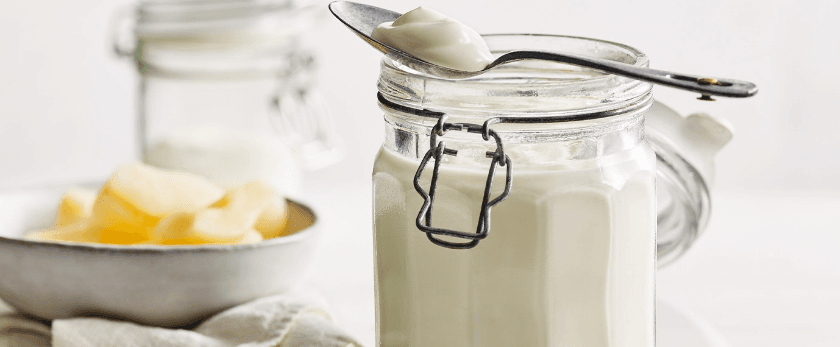Not only is it expensive, but it also contributes to the growing problem of plastic pollution in our environment. But fear not, there is a simple and sustainable solution – making your own yogurt at home!
In this article, we will discuss the negative impact of store-bought yogurt on the environment, the benefits of making your own yogurt, and provide a step-by-step guide on how to make homemade yogurt. So grab your apron and let's get started on this delicious and eco-friendly journey!
Why Store-Bought Yogurt is Bad for the Environment
1. Plastic Packaging
One of the biggest environmental concerns with store-bought yogurt is the excessive use of plastic packaging. Most yogurt containers are made from non-biodegradable plastic, which means they will take hundreds of years to decompose. This contributes to the growing problem of plastic pollution in our oceans and landfills.
2. Transportation Emissions
The transportation of yogurt from the factory to the store also has a significant impact on the environment. The long-distance travel of yogurt requires large amounts of fuel, which releases harmful greenhouse gases into the atmosphere. This contributes to climate change and air pollution.
3. Energy Consumption
The production of store-bought yogurt also requires a significant amount of energy. From the processing of milk to the packaging and transportation, the entire process consumes a large amount of energy, which contributes to carbon emissions and further exacerbates the issue of climate change.

Why Making Your Own Yogurt is Better for the Environment
1. Reduces Plastic Waste
By making your own yogurt at home, you can significantly reduce your plastic waste. Instead of buying yogurt in plastic containers, you can use reusable glass jars or containers to store your homemade yogurt. This not only reduces your plastic consumption but also helps to reduce the amount of plastic waste in our environment.
2. Locally Sourced Ingredients
When you make your own yogurt, you have control over the ingredients you use. You can choose to use locally sourced milk, which reduces the carbon footprint of your yogurt. By supporting local farmers, you are also contributing to a more sustainable and eco-friendly food system.
3. Energy Efficient
Making yogurt at home is a much more energy-efficient process compared to the production of store-bought yogurt. You can use a simple yogurt maker or even a slow cooker to make your yogurt, which consumes less energy than the industrial production process.
4. Customizable and Waste-Free
When you make your own yogurt, you can customize it to your liking. You can add your favorite fruits, nuts, or sweeteners without worrying about excess packaging or waste. This also means you can avoid unnecessary additives and preservatives found in store-bought yogurt.
What You Will Need
- Milk (preferably organic and locally sourced)
- Yogurt starter culture or plain yogurt with live active cultures
- A large pot
- A thermometer
- A yogurt maker or slow cooker
- Glass jars or containers for storage
- Optional: sweeteners, fruits, nuts, or flavorings of your choice
Directions
Step 1: Heat the Milk
In a large pot, heat the milk over medium heat until it reaches a temperature of 180°F (82°C). This helps to kill any harmful bacteria and also changes the protein structure of the milk, resulting in a thicker and creamier yogurt.
Step 2: Cool the Milk
Once the milk reaches 180°F, remove it from the heat and let it cool to 110°F (43°C). This may take about an hour, so be patient. You can speed up the cooling process by placing the pot in a cold water bath.
Step 3: Add the Starter Culture
Once the milk has cooled to 110°F, add the yogurt starter culture or 2 tablespoons of plain yogurt with live active cultures. Stir well to ensure the culture is evenly distributed.
Step 4: Incubate the Yogurt
Transfer the milk mixture into a yogurt maker or slow cooker. If using a slow cooker, cover the pot with a lid and wrap it in a towel to keep it warm. Let it incubate for 8-12 hours, depending on how tangy you want your yogurt to be.
Step 5: Refrigerate and Enjoy!
Once the yogurt has set, transfer it into glass jars or containers and refrigerate for at least 4 hours before consuming. You can add your favorite toppings or enjoy it plain. Remember to save some of the yogurt as a starter culture for your next batch.
Responsible Disposal of Yogurt Waste
Making your own yogurt at home not only reduces waste but also allows you to be more mindful of how you dispose of any leftover ingredients or waste. Here are some tips for responsible disposal of yogurt waste:
- Use leftover whey (the liquid that separates from the yogurt) in smoothies, soups, or as a marinade for meat.
- Compost any leftover fruit peels or scraps.
- Reuse glass jars or containers for storage or other purposes.
- Recycle any plastic or paper packaging that came with your ingredients.
In Conclusion
Making your own yogurt at home is a simple and sustainable way to reduce your environmental impact. By using locally sourced ingredients, reducing plastic waste, and being mindful of responsible disposal methods, you can enjoy delicious and eco-friendly yogurt while contributing to a greener future. So why not give it a try and see the difference it makes for yourself and the planet? Happy yogurt making!










